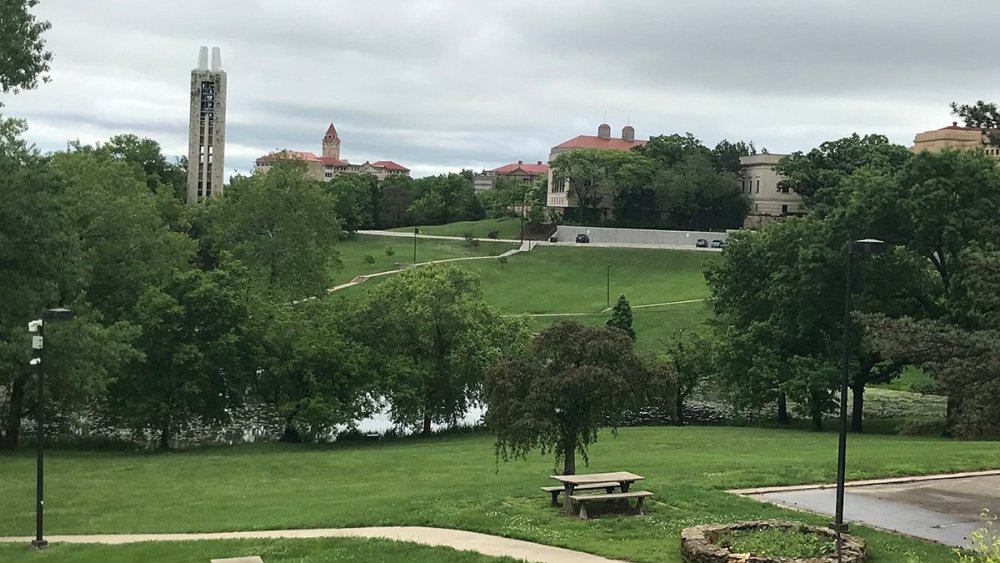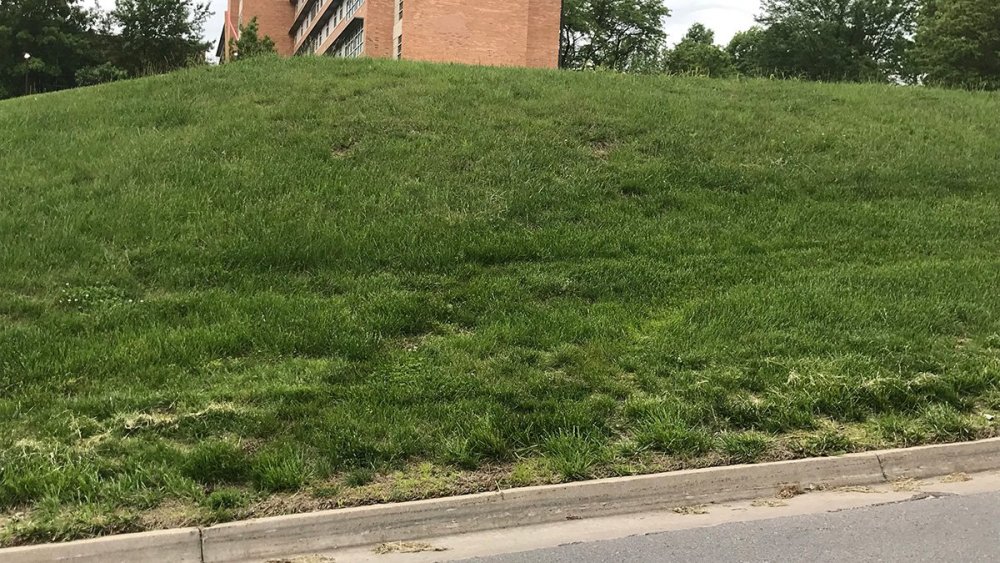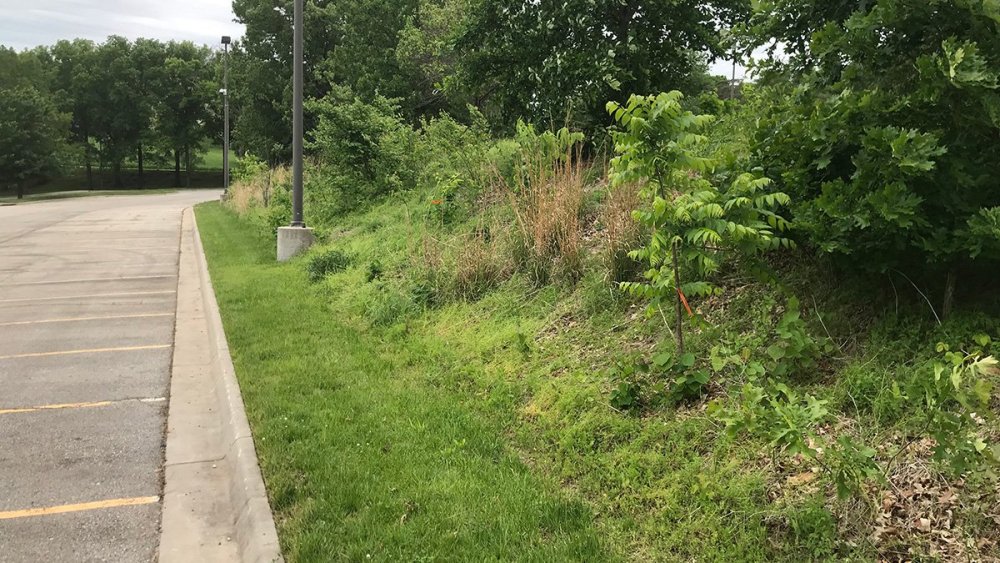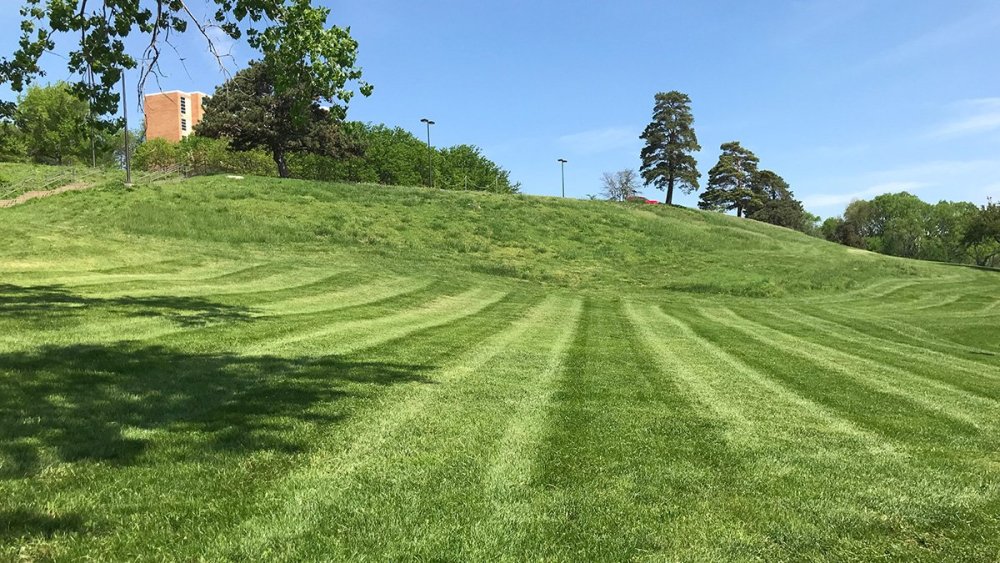The Hills of Kansas...
I have lived in the Midwest for a number of years. Although some may group all the Midwest into one image, this does injustice to the amazing variety of landscapes (not to mention people) that are here. One common Midwest misconception I had heard was that Kansas is flat. When I drove across Kansas, from Missouri to Colorado, I walked away (drove away as it were) believing this. I remember the hours of straight and flat driving until finally catching a glimpse of the mountains looming far ahead. So, it was quite a surprise to find my current little part of Kansas (Lawrence) ruled by hills and an undulating topography. Furthermore, any visitor to our neck of the woods will agree the hills that the University of Kansas resides on is what makes this place so special.
The Hills Are a Challenge
We in the landscaping world know that mowing hills is a challenge. I remember mowing a slope once with a Toro Sidewinder. The inclinometer (on the deck) was pegged at its 15-degree limit indicating I was outside manufacturer safety specs (I assure you I was far past 15 degrees).
Mowing slopes is nothing new to our business. Here at KU, the difficulty it is not usually about the slope, but about where you may land if you lose traction (and eventually you will lose traction). When there is flat land below, I don’t mind going for a little slide. But when there is a car, wall, detention pond, etc. below, breaking lose is not an option. In these situations, you don’t have a second chance. ANY mishap can result in damage or injury, both of which are unacceptable. Don’t even get me started on those daredevil mower operators that say it won’t happen to them. These people must be saved from themselves.
Our New Approach
We currently mow with front deck mowers (our existing fleet) and are onboarding new ZTR mowers. None of these mowers are meant for use on slopes greater than 15 degrees, and even if they were, the churning of the tires as gravity pulls results in torn grass, rutting, and wear patterns since changing directions is often impracticable (impossible). In today’s world, operating mowers outside manufacturer guidelines could also open the operator or organization to liability if injury occurs to property or persons. But hills are an unavoidable reality that must be managed. Therefore, we have come up with an approach that we think is manageable turning these areas into an asset rather than a liability.
Intentional “Prairie” Lawn
Transitioning turf to prairie is nothing new in our industry. While this change is frequently a great approach, in our situation we are pursuing it with as little upheaval and resource consumption as possible. Our first step is to adopt a clear guideline for areas that will be transitioned. For KU Grounds we are suggesting that slope areas greater than 15 degrees be evaluated for safe mowing. If conditions (slope, existing vegetation, lack of safe landing areas, landscape context) warrant we designate the area a no mow slope. Next, we simply stop mowing. Sounds easy to this point, but many of us have stopped mowing before just to end up in the doghouse of “it looks neglected”. In our approach, stop mowing does not equal stop managing. This is a key distinction in our approach.
Management Guidelines
Our first rule is to prevent woody encroachment. Ailanthus, Siberian Elm, Hackberry (despite being native), etc. are all prolific seeders and must be kept out of the newly forming prairie lawn. Woody species are the fastest way for the uninformed viewer to deem this approach simply neglect. Next is low-grade weed management. Some lawn weeds are tolerated since vegetation height likely shades out low growers. Thistle, Pokeweed, Queen Anne's Lace will be discouraged (sprayed, weedeated). At the appropriate time we will overseed with an select native grass/forb mix to increase desirable plants. Lastly, we will evaluate the need for mowing (or burning if appropriate) and determine the best time for promoting desirable plants while discouraging undesirables. We will delineate identify the designated areas with boulders, fence posts, ornamental pilings, etc. The surrounding flat turf areas will be mowed to grade change contours that are pleasing rather than straight lines. Demonstrating intentional and comprehensive management is essential in all interventions.
Hide It in Plain Sight
The hills at KU are an essential and much appreciated landscaping feature of our campus. Unfortunately, only a small cadre of our campus patrons know the difficulties of managing these amazing features. Mowing is sometimes dangerous and often is more trouble than it is worth. We are hoping to change hill management in a rational way resulting in improved value and appearance of our campus. Prairi-tizing (it should be a word) these areas can decrease maintenance resources, improve team safety, expand habitat/ecologic services, all while adding a novel visual component to the landscape. We are presenting this idea to management, starting with our Facilities Administration, then we plan to introduce it to key decision makers on campus. If all goes well, we won’t wish for Kansas to be flatland anymore.






2 Comments
Recommended Comments